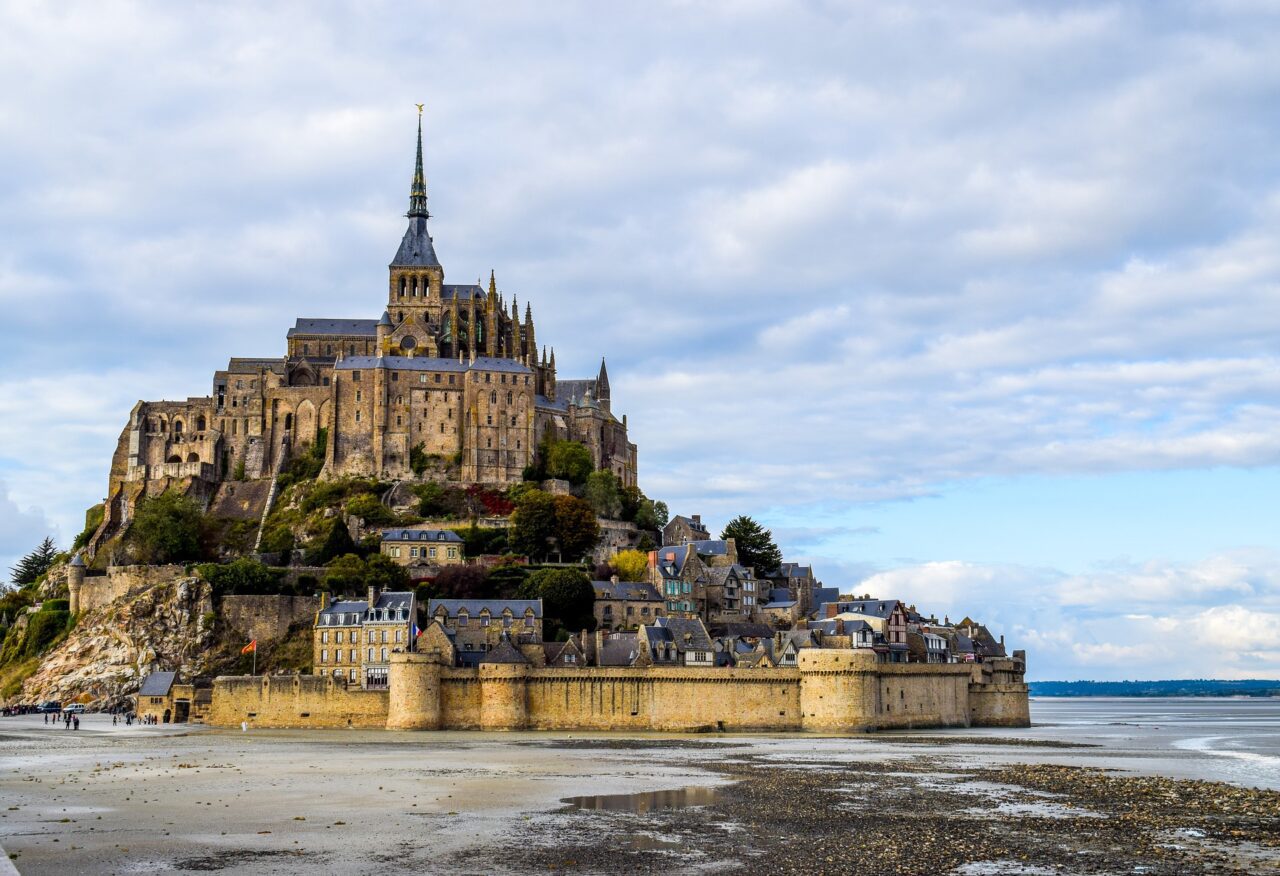Long weekends in Europe: cycling in Brittany

Welcome to ‘Long Weekends in Europe’, our new mini-series in which we’ll be exploring some of the best locations across Europe for a long weekend getaway. Throughout the series, you’ll get the low-down on some of the most stunning places you can visit and explore on and off your bike.
Today we are taking you to explore cycling in the Brittany region in the north western corner of France. Brittany or Bretagne as it’s known locally, is a cycling hub that is unlike anywhere else in France. Its hilly terrain, changeable weather conditions and testing roads make it ideal for anything from hardcore interval training to off-road adventures and leisurely coastal cruises, not to mention the wealth of history and culture to keep the whole family interested.
Where should I stay?
You really can have it your way in Brittany. Whether you like a beach resort, city escape or a simple campsite, the region has a variety of options when it comes to choosing where to stay. For a short stay, we would recommend a cosy B&B down by the sea, which is also perfect for families.
As for specific locations, it’s very difficult to choose between all of the beautiful towns and villages that are spread across this majestic region. However, for a long weekend, there can only be one place that perfectly encapsulates Bretagne.
The city of Vannes is a historic walled commune that dates back to the medieval period and is home to many hotels and restaurants that are typical of the region. The quaint shopping area is also perfect if you want to grab yourself some souvenirs and authentic French delicacies. There is also plenty to do in the city, with the cathedral of Saint-Pierre de Vannes being the perfect representation of Brittany’s characteristic blend of Gothic and Roman cultures.
What is there for families to do?
As we have touched on already, Brittany is home to some of the best beaches in France. Its coastline hugs both the English Channel and Atlantic Ocean meaning that you are never far away from somewhere sandy.
While the beaches in Brittany may not be as famous as those in neighbouring Normandy, they are equally as attractive to both locals and tourists. The best beach to take your family for the day is certainly Plage de l’Écluse, its luscious sandy floor is ideal for taking your shoes off and paddling in the sea on a warm day. There is also a promenade behind the beach that is the perfect spot for grabbing a spot of lunch. Be warned though, it can get rather crowded here at peak times.
If beaches aren’t your thing, then there are plenty of historical sites and landmarks to explore in Brittany. There are of course the classic French châteaus and churches, but if you’re looking for a true flavour of the region, go no further than the site of the megalithic stones in Carnac. The stones are said to be the remains of a Roman legion that were turned to stone by Merlin – truly the stuff of legend. The best part of the story, though, is not exactly how the stones got there, it’s that they were dragged into place by a famous Gaul known as Obelix (yes that one).
What’s cooking?
There are a number of dishes that Brittany is well known for and they are all well worth trying.
Most famously of all, Brittany serves up a kind of pancake that is very different to many you’ll have tried before. The buckwheat pancake is thin like a crêpe that is usually filled with savoury ingredients like ham, eggs and vegetables. The dish is so popular in the region that the number of vendors selling them outnumber the traditional French cafés you may expect when visiting the country.
Alongside these pancakes, the area is also famous for its seafood – no surprise given its proximity to the sea and wide range of fishing ports. The most delicious of the seafood varieties that Brittany has to offer is its shellfish such as Bouchot (French for ‘shellfish bed’) mussels and oysters. Gwynedd in North Wales is about the only place that has the same level of quality this side of the Channel.
The Bretons’ love affair with seafood doesn’t end there, seaweed is another highly popular dish that you will find on the menus of many local restaurants. You may be more familiar with this delicacy coming from Chinese takeaways in the UK, but rest assured, it is a very different dish in Brittany. The region is the highest producer of seaweed in Europe and utilises its special export in a number of ways. Try it as a starter on some crusty bread and you won’t be disappointed.
Cycling in Brittany
The region is home to some the most stunning cycle routes, taking you through the beating heart of the Bretagne countryside on- and off-road, and guaranteeing beautiful vistas along the way. France Velo Tourism is a great place to start if you are planning your route as is the Euro Velo site which maps out cycling paths all across Europe and Komoot have some handy routes on their site too.
If road riding is your jam, perhaps the most appealing route to take on is the Nantes to Brest canal route. You would need much longer than a few days to complete the whole trip, but just a small section of the route can take you past medieval castles, historic abbeys and local wildlife. This route would be perfect for the whole family as there are no cars and there’s plenty to see from the saddle.
If you’re more of a gravel or off-road fan, Brittany has plenty for you too. The abundance of beaches mean that there are many sand dunes in the region, offering a different challenge to traditional mountain bike routes, as they have far less grip and can change at any given moment (especially on a particularly windy day). These dunes are certainly not for the faint hearted, but they are guaranteed to get your blood pumping.
For the road racing fans out there, you may have heard of Tro-Bro Léon, the most prestigious and intriguing race held in Brittany on a mix of road and gravel . Fondly nicknamed ‘Le Petit Paris-Roubaix’, Tro-Bro Léon is an annual one-day event that attracts some of the top classics specialists each season, and is one of the most exciting and fun to race according to the riders. The winner even gets a pig for their troubles, something that makes the event worth a visit alone.
If you want to take on this infamous race yourself, there is a sportive each May that could easily be added to your weekend itinerary. Maybe you could convince your local club to organise a tour?
When should I visit Brittany?
As is probably not surprising, the best time to visit Brittany is in the height of summer. While this may be the busiest season, the weather is always a lot nicer which makes riding and visiting the plethora of outdoor activities in the region far more enjoyable. This being said, the weather is comparable to British summertime so there are no guarantees of sun!
If you want to avoid the seasonal holiday makers and enjoy a more traditional Breton getaway, next May will see the latest edition of ‘Gulf Week’ (May 15-21, 2023), in which thousands of boats set sail from the Gulf of Morbihan. It is a crowd-pleasing spectacle that is not to be missed.
The only time that a cycling fan may want to avoid Brittany is in the winter, as temperatures can plummet and resemble a cold day in Britain more than an idyllic French escape. However, prices are lower in the colder months and the roads more testing, so could offer a refreshing change of scene without travelling too far, and the indoor attractions will all still be there.
Getting There
The good news is that Brittany is not far away. For the more adventurous reader (or perhaps for those with a little more time), cycling there is very much an option otherwise it’s a drive away and a ferry from Portsmouth to St Malo or Plymouth to Roscoff. Cycling UK have put together a handy guide to taking your bike on a ferry which is worth a quick read.
We hope that this short guide to a long weekend in Brittany has been helpful and that you want to visit this brilliant region of France in the near future. Stay tuned for more of these guides for yet more inspiration for where to go on your next trip. Before you travel, make sure you’ve got your travel insurance sorted, especially if you’re taking your bike with you.







